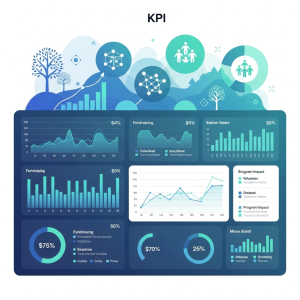Introduction
In higher education, accurate enrollment forecasting is no longer a luxury but a necessity. Institutions must anticipate future trends, identify growth opportunities, and make informed decisions to ensure their long-term success. By harnessing the power of data-driven insights, institutions can optimize their enrollment strategies and achieve their enrollment goals.
The Power of Data-Driven Enrollment Forecasting
Data-driven enrollment forecasting empowers institutions to:
- Identify High-Demand Programs: By analyzing industry trends and labor market data, institutions can pinpoint programs that align with emerging career opportunities.
- Optimize Resource Allocation: Informed decisions about faculty hiring, course offerings, and facility investments can be made based on accurate enrollment projections.
- Enhance Student Recruitment and Marketing: Targeted recruitment efforts can be directed towards high-potential student segments, maximizing the return on investment.
- Develop Effective Student Retention Strategies: By understanding the factors that influence student retention, institutions can implement strategies to improve persistence and graduation rates.
Introducing Datatelligent’s Academic Program Market Value Tool
Datatelligent, in partnership with Labor Titan, has developed a powerful tool to revolutionize enrollment forecasting. This innovative solution leverages advanced analytics and machine learning to provide actionable insights into the market value of academic programs.
Key Benefits of Using Datatelligent’s Tool:
- Accurate Enrollment Projections: By analyzing a wide range of factors, including industry growth, job market trends, and demographic shifts, the tool delivers precise enrollment forecasts.
- Data-Driven Decision Making: Institutions can make informed decisions about program offerings, resource allocation, and marketing strategies.
- Enhanced Student Recruitment and Marketing: Targeted recruitment efforts can be directed towards high-potential student segments, maximizing the return on investment.
- Improved Student Retention: By understanding the factors that influence student retention, institutions can implement strategies to improve persistence and graduation rates.
How to Leverage Enrollment Forecasting for Effective Student Retention Strategies
Accurate enrollment forecasting is essential for developing effective student retention strategies. By understanding future enrollment trends, institutions can:
- Proactively Address Potential Challenges: Identify potential enrollment declines and take steps to mitigate their impact.
- Optimize Resource Allocation: Allocate resources to support student success and retention initiatives.
- Implement Targeted Retention Strategies: Develop personalized strategies to address the specific needs of different student segments.
- Monitor Key Retention Metrics: Track key metrics, such as retention rates and graduation rates, to measure the effectiveness of retention efforts.
Conclusion
By embracing data-driven enrollment forecasting, institutions can gain a competitive edge and ensure their long-term success. Datatelligent’s Academic Program Market Value Tool provides the insights needed to make informed decisions, optimize resource allocation, and enhance student recruitment and retention. To learn more about how this powerful tool can benefit your institution, visit https://datatelligent.ai/solutions/academic-program-market-value/.











